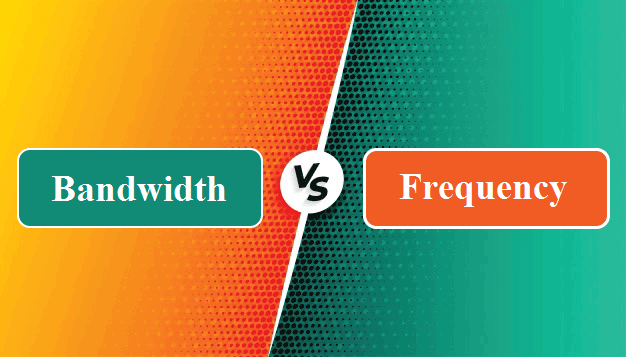Key Differences between the Bandwidth and Frequency

Bandwidth and frequency are related concepts but refer to different aspects of signals and communication. Here are the key differences between them:
-
Definition:
- Frequency: Frequency refers to the number of cycles of a periodic waveform that occur in a unit of time, typically measured in hertz (Hz). It represents the rate of oscillation or vibration of a signal.
- Bandwidth: Bandwidth, on the other hand, refers to the range of frequencies within a signal, communication channel, or system. It represents the capacity of the channel to carry information and is typically measured in hertz (Hz), kilohertz (kHz), megahertz (MHz), or gigahertz (GHz).
-
Nature:
- Frequency: Frequency is a fundamental characteristic of a signal or waveform, describing how rapidly it oscillates or vibrates. It is a single value representing the rate of repetition of the signal.
- Bandwidth: Bandwidth describes the extent or range of frequencies contained within a signal. It encompasses the lowest and highest frequencies present in the signal and represents the frequency range over which the signal is transmitted or processed.
-
Measurement:
- Frequency: Frequency is measured as a single value in hertz (Hz), representing the number of cycles per second of the waveform.
- Bandwidth: Bandwidth is measured as a range of frequencies, typically from the lowest to the highest frequency present in the signal or communication channel.
-
Usage:
- Frequency: Frequency is used to characterize signals, such as audio, radio waves, light, and electrical signals. It is used to determine the pitch of sound, the channel frequency in radio communication, and the color of light, among other applications.
- Bandwidth: Bandwidth is used to describe the capacity of communication channels, such as network connections, radio frequency bands, and electrical circuits. It determines the amount of data that can be transmitted or processed within a given time frame.
-
Relation:
- Frequency: Frequency and bandwidth are related, as the bandwidth of a signal is determined by the range of frequencies present in the signal. However, frequency refers to the rate of oscillation, while bandwidth refers to the range of frequencies spanned by the signal.
- Bandwidth: The bandwidth of a signal can be equal to, narrower than, or wider than the frequency range of the signal, depending on various factors such as modulation techniques, filtering, and channel characteristics.
In summary, while frequency describes the rate of oscillation of a signal, bandwidth describes the range of frequencies encompassed by the signal. Frequency is a single value, whereas bandwidth represents a range of frequencies.
Thank you,
